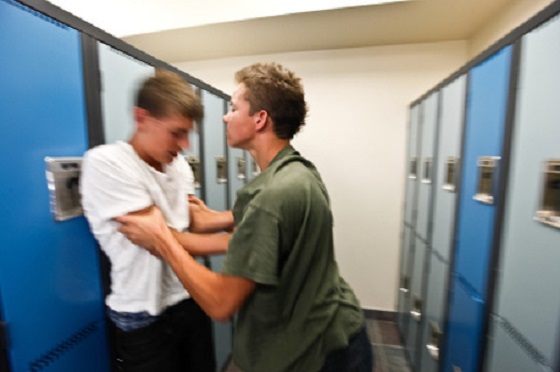Education
Red Deer Polytechnic Open House this Saturday!

Red Deer Polytechnic welcomes prospective students and community to visit campus during Open House
Red Deer Polytechnic (RDP) will showcase its range of programs, student services and facilities at the post-secondary institution’s Open House:
Saturday, October 28 | 9 am – 1 pm
Red Deer Polytechnic Main Campus
Attendees are encouraged to register to attend (drop-ins are also welcome)
“We look forward to welcoming prospective students and their supporters, who are looking to explore a variety of careers, to attend RDP’s Open House,” says Lindsay Engel, Vice President, Academic and Student Experience. “At Red Deer Polytechnic, we are proud to offer more than 80 programs across a range of credentials that prepare students for rewarding careers and that contribute to Alberta’s diverse workforce.”
Through collaboration with industry, RDP students receive enhanced work-integrated learning and applied research opportunities while making connections in their field. The Polytechnic also offers diverse cultural, social and health and well-being opportunities for students.
“Through Residence life, student groups, intramurals and much more, Red Deer Polytechnic has many opportunities for students to have a robust post-secondary experience and meet new people in fun and supportive environments,” says Ms. Engel. “Alumni often share their fond memories of attending RDP, making life-long friends and achieving their personal and professional goals.”
During Open House, RDP is pleased to offer no charge for credit program applications submitted by domestic prospective students for future admission to a program, meet faculty and staff at program exhibits and to take in-person and self guided campus tours. Attendees will also have the chance to win prizes.
More information about Red Deer Polytechnic’s Open House is available at: rdpolytech.ca/openhouse.
RDP is currently accepting applications for students wishing to attend Winter Term (starting in January 2024), Spring Term (starting in May 2024) and Fall Term (starting in September 2024).
Visit Us
Open House
SATURDAY, OCTOBER 28 | 9 AM – 1 PM | MAIN CAMPUS
If you’re graduating high school or looking at different career options, you won’t want to miss this event!
Red Deer Polytechnic has more than 80 programs that will challenge you, inspire you and prepare you for your future. Join us on October 28 to learn more about our programs and discover the wide array of student services that are available. This is your opportunity to learn all about what student life is like at Red Deer Polytechnic.
There will be free applications for credit programs during the event, program exhibits, campus tours and a chance to win prizes.
PLAN YOUR DAY!
- Free parking for all attendees
- Visit our main entrance to find assistance with wayfinding and answer any questions you may have
- Speak to the experts – Come equipped with questions to interact with faculty representing all programs offered at RDP (located in the Kevin Siros Gymnasium and Main Gymnasium)
- Attend a demonstration – Check out booths, classrooms and labs offering demonstrations of what you can learn and do to make the most of your talents at RDP
- Take a tour – Campus tours will start at the Student Connect Centre (room 1102) and will be offered from 9:15 AM – 12:15 PM
- Apply to attend – Visit the Library Computer Lab to receive assistance completing your application for admission to RDP through ApplyAlberta at no charge (some restrictions apply)
- Learn about services – Interact with staff to learn more about the services RDP offers to students including, health and wellness, food services, bookstore, funding, awards and even employment opportunities with RDP (located across campus and in the Forum)
- Enjoy lunch on us – Dig into a free bowl of soup at the FarSide Bar and Grill operated by the Students’ Association of RDP (while supplies last)
We look forward to welcoming you to campus and thank you for your interest attending RDP.
Book an In-Person Tour
In the heart of central Alberta, Red Deer Polytechnic is the best place to start your future!
Select from our tour options below, or you may use our Welcome to Red Deer Polytechnic Campus Maps brochure to tour the institution yourself.
- Main Campus: Interested in a tour of Red Deer Polytechnic’s Main Campus building and facilities? Check out our calendar to view available tour dates and times. Book your personalized tour now!
- Residence: Email [email protected].
Visit Us Virtually
From near or far, we invite you to get to know Red Deer Polytechnic (RDP)!
Red Deer Polytechnic’s new Virtual Tour is a great way to see all that our beautiful campuses have to offer. Featuring 100 different areas and 360-degree views, you will be able to imagine yourself learning and living here. You can also visit Red Deer Polytechnic’s YouTube channel to be introduced to our campus, facilities, programs, students and much more.
Want to stay social? You can also say hi and stay connected with us on Facebook, Instagram, Twitter and LinkedIn.
Red Hot Science Workshops
Red Hot Science workshops at Red Deer Polytechnic provide a variety of science, technology, engineering and math (STEM) experiences for youth groups and school groups in central Alberta.
Red Deer Polytechnic students can volunteer to help lead Red Hot Science activities, too.
Alberta
Alberta poll shows strong resistance to pornographic material in school libraries

From LifeSiteNews
A government survey revealed strong public support, particularly among parents, for restricting or banning sexually explicit books.
Albertans are largely opposed to their children viewing pornography in school libraries, according to government polling.
In a June 20 press release, the Government of Alberta announced that their public engagement survey, launched after the discovery of sexually explicit books in school libraries, found that Albertans strongly support removing or limiting such content.
“Parents, educators and Albertans in general want action to ensure children don’t have access to age-inappropriate materials in school libraries,” Demetrios Nicolaides, Minister of Education and Childcare, said.
“We will use this valuable input to guide the creation of a province-wide standard to ensure the policy reflects the priorities and values of Albertans,” he continued.
READ: Support for traditional family values surges in Alberta
The survey, conducted between May 28 to June 6, received nearly 80,000 responses, revealing a widespread interest in the issue.
While 61 percent of respondents said that they had never previously been concerned about children viewing sexually explicit content in libraries, most were opposed to young children viewing it. 34 percent said children should never be able to access sexually explicit content in school libraries, while 23 percent believed it should be restricted to those aged 15 and up.
Similarly, 44 percent of parents of school-aged children were supportive of government regulations to control content in school libraries. Additionally, 62 percent of respondents either agreed or strongly agreed that “parents and guardians should play a role in reporting or challenging the availability of materials with sexually explicit content in school libraries.”
READ: Alberta Conservatives seeking to ban sexually graphic books from school libraries
The polling results come after the Conservative Alberta government under Premier Danielle Smith announced that they are going ahead with plans to eventually ban books with sexually explicit as well as pornographic material, many of which contain LGBT and even pedophilic content, from all school libraries, on May 27.
At the time, Nicolaides revealed that it was “extremely concerning” to discover that sexually explicit books were available in school libraries.
The books in question, found at multiple school locations, are Gender Queer, a graphic novel by Maia Kobabe; Flamer, a graphic novel by Mike Curato; Blankets, a graphic novel by Craig Thompson; and Fun Home, a graphic novel by Alison Bechdel.
David Clinton
Why Are Ontario’s Public Schools So Violent?


 David Clinton
David Clinton
Ontario’s Auditor General just released a performance audit on the Toronto District School Board. I’m sure it’ll surprise exactly no one that “financial and capital resources are not consistently allocated in the most cost-effective or efficient way” or that “The effective management of operations was not always being measured and assessed for internal decision-making”.
And there was plenty of institutional chaos:
“Between 2017/18 and 2022/23…about 38% of TDSB schools did not report conducting the minimum number of fire drills required by the Ontario Fire Code annually, and about 31% of TDSB schools did not report conducting the minimum number of lockdown drills required by TDSB policy annually. The TDSB does not have an effective process to ensure the required number of drills are performed by each school, each year, or that they are performed in accordance with TDSB policy when performed.”
What else would you expect from a massive government bureaucracy that employs 40,000 people, spends $3.6 billion annually and – based on many of the highlighted items on their website – is laser-focused on pretty much anything besides education?
What you might not have seen coming was that around half of the report centered on in-school violence. To be sure, we’re told that there were only 407 violent events reported to the board during the 2022/2023 school year – which is a rate of around 17 events for every 10,000 students. 17:10,000 doesn’t exactly sound like an environment that’s spiraling out of control.
There was a caveat:
“Due to input errors by principals, the TDSB underreported the number of violent incidents that occurred between 2017/18 to 2021/22 to the Ministry by about 9%.”
Ok. But we’re still nowhere near Mad Max levels of violence. So what’s attracting so much of the auditor’s attention? Perhaps it’s got something to do with a couple of recent surveys whose results don’t quite match the board’s own records. Here’s how the audit describes the first of those:
“The 2022/23 TDSB Student and Parent Census was responded to by over 138,000 students, parents, guardians and caregivers. It showed that 23% of students in Grades 4 to 12 that responded to the survey said they were physically bullied (e.g., grabbed, shoved, punched, kicked, tripped, spat at), and about 71% stated they were verbally bullied (e.g., sworn at, threatened, insulted, teased, put down, called names, made fun of). Further, about 14% of student respondents indicated they had been cyberbullied. TDSB’s central tracking of all bullying incidents is much lower than this, suggesting that they are not centrally capturing a large number of bullying incidents that are occurring.”
“23% of students in Grades 4 to 12 that responded to the survey said they were physically bullied”. That’s not a great fit with that 17:10,000 ratio, even if you add the 9 percent of underreported incidents. And bear in mind that these students and their families were willing to discuss their experiences in a survey run by the school board itself, so it’s not like they’re hard to find.
But that’s not the worst of it. The Elementary Teachers’ Federation of Ontario (ETFO) ran their own survey in 2023. They wanted to hear about their members’ experiences with workplace violence. Here, quoting from the audit report, is what TDSB respondents told them:
- 42% had experienced physical force against themselves in 2022/23;
- 18% had experienced more than 10 of these physical force incidents in 2022/23;
- 81% indicated the number of violent incidents increased since they started working;
- about 77% responded that violence was a growing problem at their school;
- about 29% indicated they had suffered a physical injury;
- 57% had suffered a psychological injury/illness (such as mental stress, psychological or emotional harm) as a result of workplace violence against them; and
- about 85% indicated that violence at their school made teaching and working with students more difficult.
29 percent of teachers suffered a physical injury due to workplace violence. That’s elementary school teachers we’re talking about.
For perspective, even accounting for the 9 percent underreporting, the TDSB was aware of events impacting less than a quarter of a percentage point of their students (and apparently didn’t report any violence against teachers). But by their own accounts, 23 percent of all students and 42 percent of elementary teachers have suffered attacks. Are board officials willfully ignoring this stuff?
And if only there was some way to address violence and other criminal activities on school property. Perhaps – and I’m just spitballing here – there could even be people working in schools whose job it would be to (what’s the word I’m looking for?) police crime.
On a completely unrelated note, back in November, 2017, the Toronto District School Board voted 18-3 to permanently end their School Resource Officer (SRO) program. Since then, police officers have been unwelcome on board property.
To be sure, the TDSB has “accepted” all 18 of the report’s recommendations. But talk is cheap. Who’s to say that commitment won’t play out the same way we’ve seen with their fire drill compliance.
Can you spell “class action lawsuit”?
-

 Also Interesting2 days ago
Also Interesting2 days ago9 Things You Should Know About PK/PD in Drug Research
-

 Business2 days ago
Business2 days ago‘Experts’ Warned Free Markets Would Ruin Argentina — Looks Like They Were Dead Wrong
-

 Business2 days ago
Business2 days agoCannabis Legalization Is Starting to Look Like a Really Dumb Idea
-

 Bruce Dowbiggin1 day ago
Bruce Dowbiggin1 day agoThe Covid 19 Disaster: When Do We Get The Apologies?
-

 Media2 days ago
Media2 days agoCBC journalist quits, accuses outlet of anti-Conservative bias and censorship
-

 Business1 day ago
Business1 day agoCarney government should recognize that private sector drives Canada’s economy
-

 Automotive2 days ago
Automotive2 days agoAmerica’s EV Industry Must Now Compete On A Level Playing Field
-

 Alberta1 day ago
Alberta1 day agoFourteen regional advisory councils will shape health care planning and delivery in Alberta





